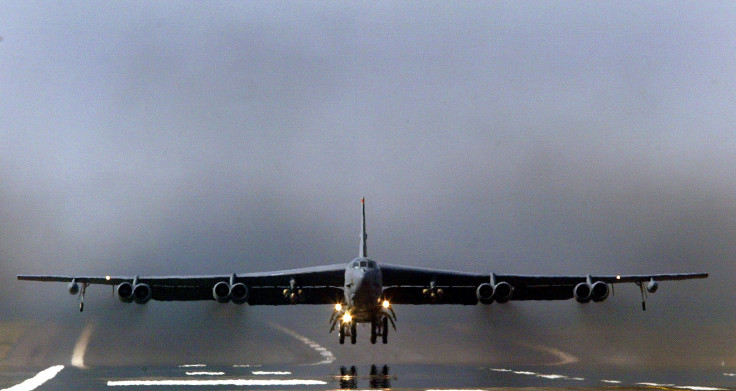US Set To Unveil Next-Generation Bomber Soon: Report

The U.S. Air Force is set to announce the winner of a multi-billion dollar contract for the design and construction of a new series of long-distance bombers set to replace its current Cold-War era fleet.
The Long Range Strike Bomber (LRSB) program winner will be announced in the next few weeks, and the contract is set to be awarded to either Northrop Grumman Corporation or a consortium from Boeing Co and Lockheed Martin Corporation, Agence France-Presse (AFP) reported Friday, citing sources.
The program has called for the creation of between 80 and 100 of the new strategic bombers, which would replace America’s fleet of B-52s and B-1s.
In addition to long-range bombing capabilities, the LRSB hopes to give the U.S. new capabilities for long-range surveillance and intelligence-gathering capabilities, as well as powerful electronic and signal jammers to prevent the aircraft from being detected.
Aviation analyst Richard Aboulafia told AFP that the LRSB will likely be a “fixed-wing” design without a distinct fuselage, offering advantages for stealth. He added that the aircraft would likely not be supersonic, due to concerns over fuel costs and visibility.
"Don't make a lot of noise, don't create a radar signature, go as high as you can and of course have those on-board electronic warfare systems that can jam the other guy if he does target you," he told AFP.
The new aircraft is set to replace America’s aging fleet of 159 bombers, which have an average age of 39 years. Less than half of that number are currently “mission capable” in at least one area, and only 20 aircraft -- the highly classified B-2 stealth bombers -- are capable of penetrating into advanced integrated air defense systems being fielded by countries like China or Russia.
However, the program’s cost has come under criticism. The Center for Budgetary and Strategic Assessments estimates that the program’s total cost will be about $73 billion, and each aircraft produced under the classified and unusually structured program has been estimated to cost $550 million in 2010 dollars ($601 million in 2015).
However, security officials have defended the program’s costs, pointing out that it has been designed to minimize developments costs by using “mature” technologies off-the-shelf, and focusing on integrating them into the new platform.
© Copyright IBTimes 2024. All rights reserved.





















